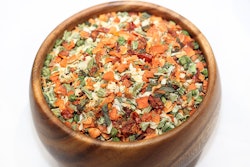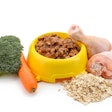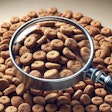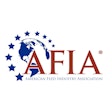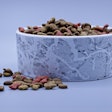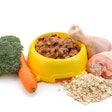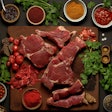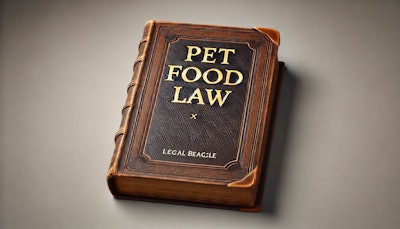
Pet food production in the European Union is governed by a complex and evolving framework of legislation designed to ensure safety, transparency and quality throughout the supply chain. On its website, the Fédération Européenne de l'Industrie des Aliments pour Animaux Familiers (FEDIAF, European Pet Food Industry Federation) lists the 31 laws and regulatory measures directly affect how pet food is manufactured, labeled, marketed and traded within the EU. These rules span a wide range of areas, from plant licensing and health certifications to the use of additives, advertising practices and the formulation of dietetic products. Regularly updated to reflect new scientific and technological developments, this legal framework helps safeguard animal health, support consumer trust and facilitate trade across member states.
From FEDIAF:
The list below is a selection of the applicable legislation and does not include all the regulations and rules applicable to the pet food sector.
1. Directive 82/475/EEC laying down the categories of feed materials for the labelling of compound feedingstuffs
Ø Lists and defines the 19 categories of feed materials that may be used in pet food and labelled as such on finished pet food products.
2. Directive 94/62/EC on packaging and packaging waste.
Ø Prevention of environmental impact of packaging and packaging waste.
Ø Reduction of packaging waste.
Ø Maximum heavy metal concentrations in packaging materials.
3. Directive 98/51/EC laying down the conditions and arrangements for approving and registering certain establishments and intermediaries operating in the animal feed sector
Ø According to feed hygiene regulation 183/2005, imports from third countries must comply with the requirements of this directive until the European Commission will have drawn up third country lists and third country lists of establishments
4. Directive 2001/18/EC on the deliberate release into the environment of genetically modified organisms and repealing Council Directive 90/220
Ø Concerning the deliberate release into the environment of genetically modified organisms for any other purposes than placing on the market within the Community.
Ø Governing the placing on the market genetically modified organisms as or in products within the Community.
Ø Provides labelling requirements and the threshold of 0.9% of authorised GMOs which need not to be labelled in case of adventitious, unavoidable presence.
5. Directive 2001/82/EC on the Community code relating to veterinary medicinal products
Ø Defines what has to be considered a veterinary medicinal product:
Ø any substance or combination of substances presented as having properties for treating or preventing disease in animals; or
Ø any substance or combination of substances which may be used in or administered to animals with a view either to restoring, correcting or modifying physiological functions by exerting a pharmacological, immunological or metabolic action, or to making a medical diagnosis.
6. Regulation (EC) No 999/2001 laying down the rules for the prevention, control and eradication of certain transmissible spongiform encephalopathies (TSE Regulation)
Rules for the prevention, control and eradication of transmissible spongiform encephalopathies (TSEs) in animals.
Ø Determination of BSE status – Classification of countries or regions into 3 categories.
Ø TSE Monitoring Programme.
Ø Animal feeding.
Ø Specified Risk Materials (SRMs).
Ø Placing on the market and export of products of animal origin including pet food.
Ø Import of products of animal origin including feed materials and pet food.
7. Directive 2002/32/EC on undesirable substances in animal feed
Ø Feed materials may only be put into circulation in the EC if they are sound genuine and of merchantable quality.
Ø List of undesirable substances and the tolerated maximum levels in feed materials and feedingstuffs.
Ø Dilution and mixing with other consignments of feed materials or feedingstuffs is banned.
8. Regulation (EC) No 178/2002 laying down the general principles and requirements of food law, establishing the European Food Safety Authority and laying down procedures in matters of food safety
Ø The Regulation applies to all stages of the production, processing and distribution of food and feed.
Ø It applies to feed produced for, or fed to, food producing animals, not directly to pet food. The Regulation’s principles on safety, traceability, self-responsibilities and definitions must be observed by pet food manufacturers.
Ø Via Regulation 183/2005/EC on Feed Hygiene, the Rapid Alert System for Food and Feed (RASFF) applies to pet food.
Ø Basic principles of the Regulation should be followed by the pet food industry, such as:
o Feed safety requirements - Feed must be safe.
o Traceability principles (full traceability of feed materials and finished products).
9. Regulation (EC) No 1829/2003 on genetically modified food and feed
Ø Lays down Community procedures for the authorisation and supervision of genetically modified food and feed (including pet food).
Ø Lays down provisions for the labelling of genetically modified food and feed.
Ø Covers all GMO derivatives, including those which have no trace of DNA or genetically modified proteins.
Ø Applies to three types of products: GMOs for food and feed use; food and feed containing
Ø GMOs; food and feed produced from or containing feed materials produced from GMOs.
Ø From its scope excludes products obtained using a genetically modified processing aid.
Ø Provides that the labeling requirements do not apply to feed containing material which contains, consist of or is produced from GMOs in a proportion no higher than 0.9 per cent of the feed and of each feed of which it is composed, provided that this presence is adventitious or technically unavoidable.
Ø Paragraph 3 provides that in order to establish that the presence of this material is adventitious and technically unavoidable; operators must be in position to supply evidence to satisfy the competent authority that they have taken appropriate steps to avoid the presence of such material.
10. Regulation (EC) No 1830/2003 on the traceability and labelling of genetically modified organisms and the traceability of food and feed products produced from genetically modified organisms
Ø Provides a framework for the traceability of feed and food produced from GMOs.
Ø Facilitates accurate labelling of feed products and to monitor the implementation of the appropriate risk management.
11. Regulation (EC) No 1831/2003 concerning additives in animal nutrition
Ø Requirements for authorisation of feed additives
Ø Definitions of categories and functional groups of feed additives.
12. Directive 2004/10/EC on the principles of good laboratory practice and the verification of their applications for tests on chemical substances
Ø Laboratories carrying out tests on chemical products in accordance with Directive
Ø 67/548/EEC shall comply with the OECD Principles of Good Laboratory Practice as laid down in Annex I.
Ø Member States shall make inspections and study checks in accordance with the GLP principles of OECD as laid down in Annex I.
Ø OECD standards, described in Section I, apply to the non-clinical safety testing of test items contained e.g. in veterinary drugs, food and feed additives and industrial chemicals.
Ø These principles of GLP apply to all non-clinical health and environmental safety studies required by regulation for the purpose of registering food and feed additives and similar products, and for the regulation of industrial chemicals, unless exempted by national legislation.
13. Regulation (EC) No 852/2004 on the hygiene of foodstuffs
Ø This regulation does not apply to pet food, as pet food is in the scope of Regulation (EC) No 183/2005 (feed hygiene).
Ø It is included here for definitions in the glossary.
14. Regulation (EC) No 882/2004 on official controls performed to ensure the verification of compliance with feed and food law, animal health and animal welfare rules
Ø Laying down Member States requirements for official controls
Ø Note: Regulation (EU) 2017/625 on official controls and other official activities performed to ensure the application of food and feed law, rules on animal health and welfare, plant health and plant protection products will gradually replace Reg 882/2004
15. Regulation (EC) No 183/2005 laying down requirements for feed hygiene
Ø Provides the primary responsibility of the feed business operator for feed safety.
Ø Registration of all establishments manufacturing pet food.
Ø Approval of establishments (only feed business operators producing certain additives).
Ø Minimum manufacturing conditions requirements with regards to facilities & equipment, personnel, production, quality control, storage, and register, which must be fulfilled by the pet food manufacturer.
Ø HACCP implementation is mandatory; permanent, written procedures shall be based on HACCP principles as mentioned in Article 6.
Ø Conditions and arrangements ensuring full traceability of feed materials and compound feed.
Ø Industry Guides are voluntary, they shall take into account the relevant codes of practice of the Codex Alimentarius; they are finally assessed by the Community and periodically reviewed; published in C series OF Official Journal of European Union;
Ø Provides that the Rapid Alert System applies to feed animals not kept for food production including pet food.
16. Directive 2006/114/EC concerning misleading and comparative advertising
Ø Laying down common rules applicable for avoiding misleading advertising
Ø Permitting comparative advertising and laying down the conditions
17. Regulation (EC) No 834/2007 on organic production and labelling of organic products
Ø Laying down rules of organic production and labelling of food and feed
Ø Not applicable to pet food
18. Regulation (EC) No 429/2008 on detailed rules for the implementation of Regulation No 1831/2003 as regards the preparation and presentation of the applications and the assessment and the authorization of feed additives
Ø Provides very detailed information on how to prepare the application for the authorization of feed additives inter alia; the content and format of Application Form, Public Summary and Scientific Summary of the dossier.
Ø Specifies requirements for studies on safety, efficacy, identity, characterization, conditions of use of the additive and post market monitoring plan.
Ø Describes preparatory requirements for various dossiers like for additives used in pet food manufacturing and additives already authorized under Directive 70/524/EEC.
19. Directive 2009/34/EC relating to common provisions for both measuring instruments and methods of metrological control
Ø Laying down the conditions on measuring and metrological controls
Ø Defining the design to be used for the “e” mark
20. Regulation (EC) No 152/2009 laying down the methods of sampling and analysis for the official control of feed.
Ø Lays down the methods of sampling and analysis for the official control of feed.
Ø Specifies method for sampling to determine of constituents, additives and undesirable substances in Annex I.
Ø Includes provisions relating to preparation of samples, reagents and apparatus used in methods of analysis in Annex II.
Ø Provides information on analytical methods and expression of results in Annex III.
Ø Describes quality assurance requirements, requirements for laboratories and methods of analysis to control undesirable substances including the determination of total gossypol, level of dioxins (PCDD/PCDF) and dioxin-like PCBs in Annex V.
Ø Provides information on interpreting results for PCDD and PCBs: The batch is accepted if the analytical results of a single analysis do not exceed the respective maximum level as laid down in Directive 2002/32/EC taking into account the measurement uncertainty.
Ø The lot is non-compliant with maximum level as laid down in Directive 2002/32/EC if the upperbound analytical result confirmed by duplicate analysis exceeds the maximum level beyond reasonable doubt taking into account the measurement uncertainty.
Ø Lays down the methods of analysis to control illegal presence of no longer authorised additives in feed in Annex VIII.
21. Regulation (EC) No 767/2009 on the marketing and use of feed.
Ø Replaces amongst others directive 79/373/EEC and directive 96/25/EC.
Ø Pet food may only be placed on the market if safe.
Ø Lays down the rules for labelling and also the off-pack communication of pet food.
Ø Regulates claims.
Ø Catalogue of Feed Materials.
Note: The current version of the EU Catalogue of feed materials (Regulation (EU) 68/2013) lists feed materials permitted in animal feed in a voluntary/non-conclusive way; the names used in the Catalogue are not required to be used for labelling provided the term used describes the feed material properly; feed materials not listed must be listed in the EU register of feed materials.
Ø Feed materials must not represent any danger to animal or human health or to the environment.
Ø Feed may only be put into circulation if they are of sound, genuine and merchantable quality.
Ø Labelling requirements for feed materials.
Ø A non-exclusive list of feed materials with specific names, description and compulsory declarations.
22. Regulations (EC) No 1069/2009 and (EU) No 142/2011 laying down health rules as regards animal by-products and derived products not intended for human consumption (Animal by-products Regulation) and its implementing Regulation
Ø Animal and public health rules for the collection, transport, storage handling, processing and use or disposal of animal by-products, to prevent these products from presenting a risk to animal or public health.
Ø Approval of pet food plants including the requirements, which must be fulfilled by the plants.
Ø Specific health requirements for feed materials, processed animal proteins and pet food with regards to feed material origin (Category 3), heat treatment, prevention of re-contamination, packaging and microbiological testing.
Ø Health requirements and health certificates for import of animal by-products including feed materials, processed animal proteins and pet food from 3rd countries.
23. Directive 2010/13/EU on the coordination of certain provisions laid down by law, regulation or administrative action in Member States concerning the provision of audiovisual media services (Audiovisual Media Services Directive)
Ø Lays down rules on broadcasting
Ø Restricting certain advertising, e.g. minors
24. Regulation 10/2011/EU on plastic materials and articles intended to come in contact with food.
Ø Authorised materials to be used in the manufacture of packaging materials.
Ø Migration limits from packaging material to food materials.
25. Recommendation 2011/25/EU establishing guidelines for the distinction between feed materials, feed additives, biocidal products and veterinary products
Ø Laying down guidance for distinguishing substances used in animal feed
26. Directive 2011/83/EU on consumer rights
Ø Laying down consumer rights, in particular for contracts
27. Regulation (EU) No 576/2013 on the non-commercial movement of pet animals
Ø lays down the animal health requirements applicable to the non-commercial movement of pet animals and the rules for compliance checks on such movement
Ø Established the pet passport
Ø
28. Commission Recommendation (EU) 2016/1319 of 29 July 2016 amending Recommendation 2006/576/EC as regards deoxynivalenol, zearalenone and ochratoxin A in pet food
Ø Establishes guidance values for deoxynivalenol, zearalenone, ochratoxin A, fumonisins B1+B2 and T-2 and HT-2 toxin in feed materials and pet food.
Ø Pet food manufacturers should use these guidance levels, which are aligned with the well-established pet food industry recommendations, in their HACCP system to determine the critical limits, which separate acceptability from unacceptability.
29. Regulation (EU) 2020/354 establishing a list of intended uses of animal feedingstuffs for particular nutritional purposes
Ø Laying down the essential nutritional requirements for specific diets of animals whose process of assimilation, absorption or metabolism is temporarily or permanently impaired
30. The EFSA Guidances, prepared by the Panel on Additives and Products or Substances used in Animal Feed
Ø Help to prepare the dossier for the authorization of additives.
Ø The following documents mention detailed requirements:
o “Guidance for the preparation of dossiers for the additives already authorised for use in food”. (2012)
o Guidances for the preparation of dossiers for the technological, sensory, nutritional and zootechnical additives. (2012)
Ø It is important to mention that the EFSA guidance does not substitute for the obligation of an applicant to comply with the requirements of Regulation No 1831/2003
31. European Register of feed additives
Ø Listing all feed additives authorised in animal feed
Ø Available on-line and updated on a regular basis
Ø http://ec.europa.eu/food/food/animalnutrition/feedadditives/registeradditives_en.htm
NOTE: the current version of the register has no legal value but should be consulted for checking if additives are approved by referring to the authorising legal act.


